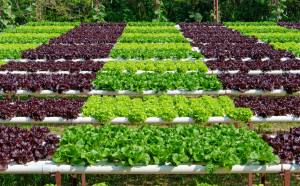Try These Gardening Tips to Choose the Right Method for You
 If you’re looking for a more non-traditional way of gardening, there are a lot of ideas out there that might fit your needs, your commitment level and your budget. Some are newer innovations, while others have been around for generations. Others strive to imitate the processes in an ideal natural environment. Here are some gardening tips for choosing the ideal growing plan for you:
If you’re looking for a more non-traditional way of gardening, there are a lot of ideas out there that might fit your needs, your commitment level and your budget. Some are newer innovations, while others have been around for generations. Others strive to imitate the processes in an ideal natural environment. Here are some gardening tips for choosing the ideal growing plan for you:
Lasagna gardening: This method layers organic materials for a nutrient-rich growing environment. It can be a good choice for a no-till plot, because the layers of plant “waste” kill the sod under the garden and immediately start building a fertile place for growing. The goal for this type of garden is to build rich, diverse layers of materials, including straw, compost, kitchen scraps, wood chips, newspaper, grass clippings and cardboard. This is a low-tech, low-cost method that makes the most of what you already have to fuel your garden.
Drawbacks: You may be limited in terms of size with a lasagna garden because it requires so much debris to get started and maintain. You could also introduce pests into your garden that might not otherwise invade because you have such a wide variety of compost and other materials layered in your garden.
Hugulkultur: This gardening style comes from Germany and other eastern European countries and utilizes the benefits of decomposing wood to feed plants. To get started with Hugulkultur, you’ll start with a layer of bigger limb sections in the shape that you want your garden bed and then add a layer of smaller pieces of wood, twigs and straw. Finally, fill in the gaps with soil and begin planting. The mounds retain moisture but balance it with good drainage.
Drawbacks: It can take a long time for wood to break down, so this will be a study in gardening patience. It also may require a lot of chopping and hauling of wood, depending on how big of a garden you’re planning.
Aquaculture: This is a gardening method that appeals to many because of the symbiotic relationship created between fish and plants. Each is grown separately, but the plants naturally clean the water before it goes back to the fish and the waste of the fish feeds the plants. This approach can help farmers increase their profits by offering a new product.
Drawbacks: While aquaculture is an exciting way to grow plants and fish, it doesn’t tend to be feasible for non-commercial gardens. Even a small system designed for aquaculture will set you back hundreds of dollars and keeping both plants and fish healthy can reach beyond what can be addressed with simple gardening tips.
No matter what kind of gardening style fits your budget and your yard, you’ll want to identify your plants with Kincaid Plant Markers. No list of gardening tips is complete without including a plan for neatly identifying each variety.
